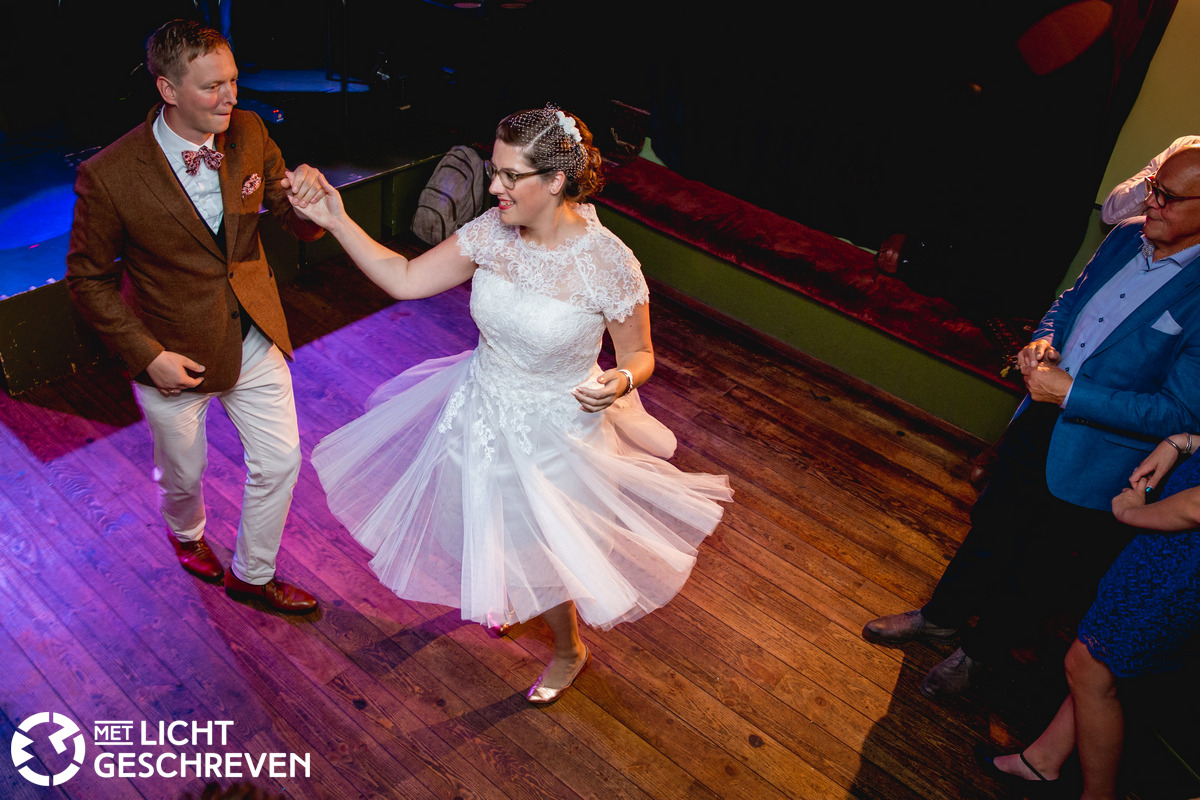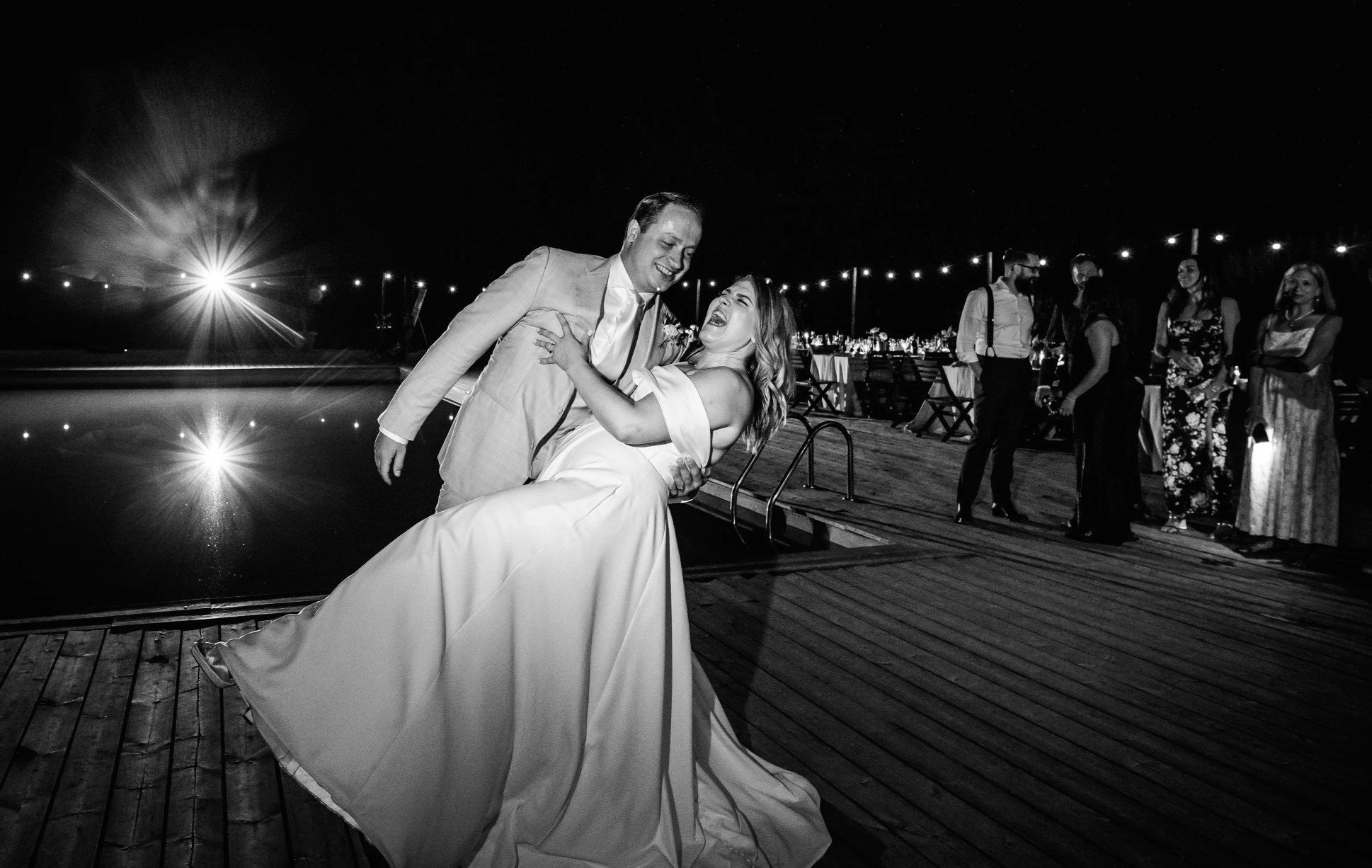Learning to dance can be a challenge, as most things in life that are worthwhile tend to be. As we progress as dancers, we gain confidence in our own abilities, which is good. This confidence dares us to try new things, to push ourselves beyond our comfort zone in class and on the dance floor. This confidence has a dark side though.
Too often we notice in class that when a move is not working, one of the dancers blames the other. In many cases, it’s the follow blaming a lead for not doing things right, but it also happens the other way around. We believe that giving feedback to your dance partner in this way ultimately holds you back as a dancer. So in this article, we want to explore how we can adopt a more open attitude in giving and receiving feedback – be it with your dance partner or one of your teachers.
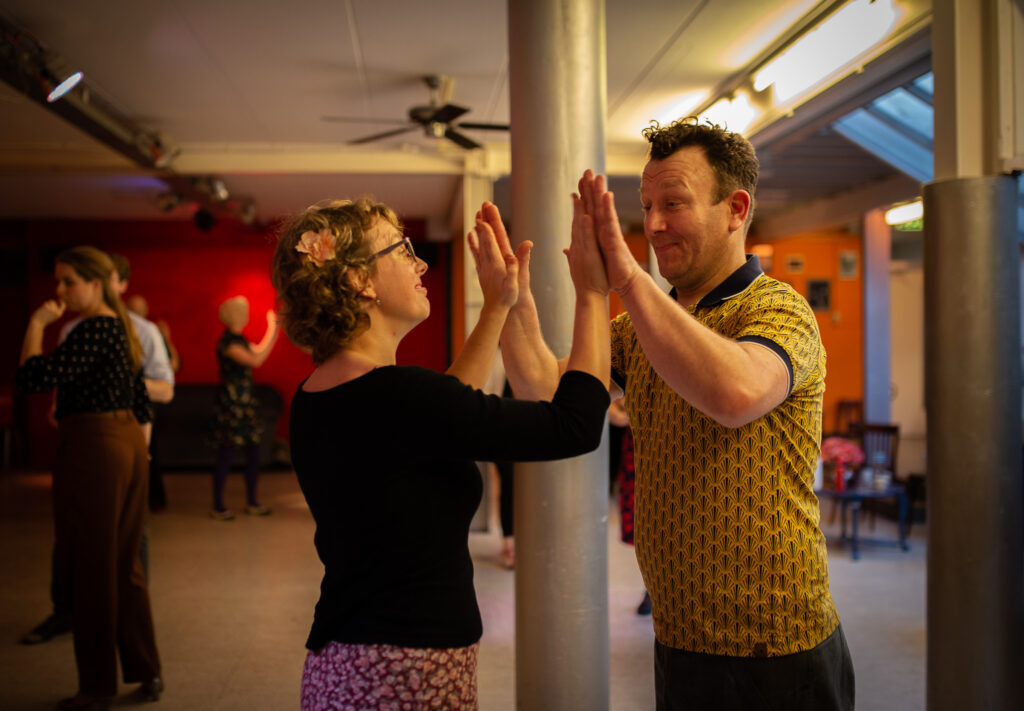
Giving negative feedback and how it affects your partner
interacting with another human being. When we say to the teacher, “This move isn’t working, what is my partner doing wrong?”, your partner might feel bad, and it will affect this person’s confidence such that he/she/they feel more pressure to get the move right, leading to making more mistakes and potentially struggling more. In a worst case scenario, constant blame may plant a seed in this person’s mind that could lead to developing a fixed mindset about their ability to dance. Believing they can’t become better dancers than they currently are, they may give up and stop dancing, or just stop trying to improve, both of which ultimately hurts this person and the dance scene. So giving negative feedback can hurt your dance partners confidence and motivation to dance.
How giving negative feedback affects you
Now, let’s talk about how this behaviour affects you directly. The implication that we make when we blame our partner for our failure to execute a move is that we know the move perfectly, and thus, have nothing else to learn. This can lead to defensive behaviour and even anger when the teacher points out that it is actually something both parties were contributing to. As teachers, we have had to correct people who thought they were right on multiple occasions. After noticing that feedback is not received well, teachers might even become hesitant to share their thoughts with you, which definitely affects you in a negative way.
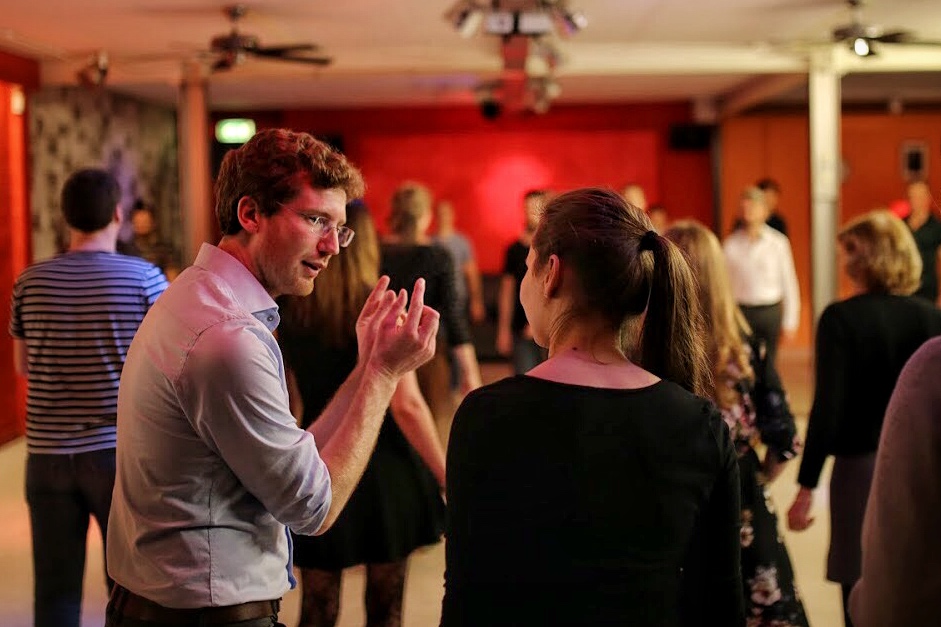
Professional dancers are constantly working on improving themselves
When you think about it, it´s rather arrogant to dismiss feedback or blame your partner for the failure of a move. Considering that professional dancers spend a lifetime analyzing and improving their execution of basic movement, it is arrogant to think that we can master a move in a single (or a few) lessons to the point that we can squarely lay the blame on our partner.
Building a positive learning environment is everybody’s responsibility
It is true that we all develop at different speeds, and we may well get a better feeling quicker for a move compared to our partner. When we are in mixed level classes, our responsibility towards building a positive learning environment for the beginners is so crucial to building a happy, healthy scene. We want to encourage and build the level of all the dancers in our scene because this means we can all have a lot more fun on the dance floor. Through patience and a bit of humility, we can ensure that the people we dance with have a positive experience: one that encourages them to stick with the dance, and to grow as a dancer.
Having a growth mindset will help you grow
We have sat in on beginner lessons as intermediate dancers, and we’ve been in intermediate lessons as a beginner and our approach to each is the same: We always assume that we have something to learn… regardless if it is a basic that we’ve done a million times, or a series of moves we’ve never even seen before. When we go into a lesson with a growth mindset we open ourselves up to the possibility of learning something about a move that can help us improve our dancing. At the same time, we will also take responsibility for our part of a move/sequence and show our partner that we are in it together.
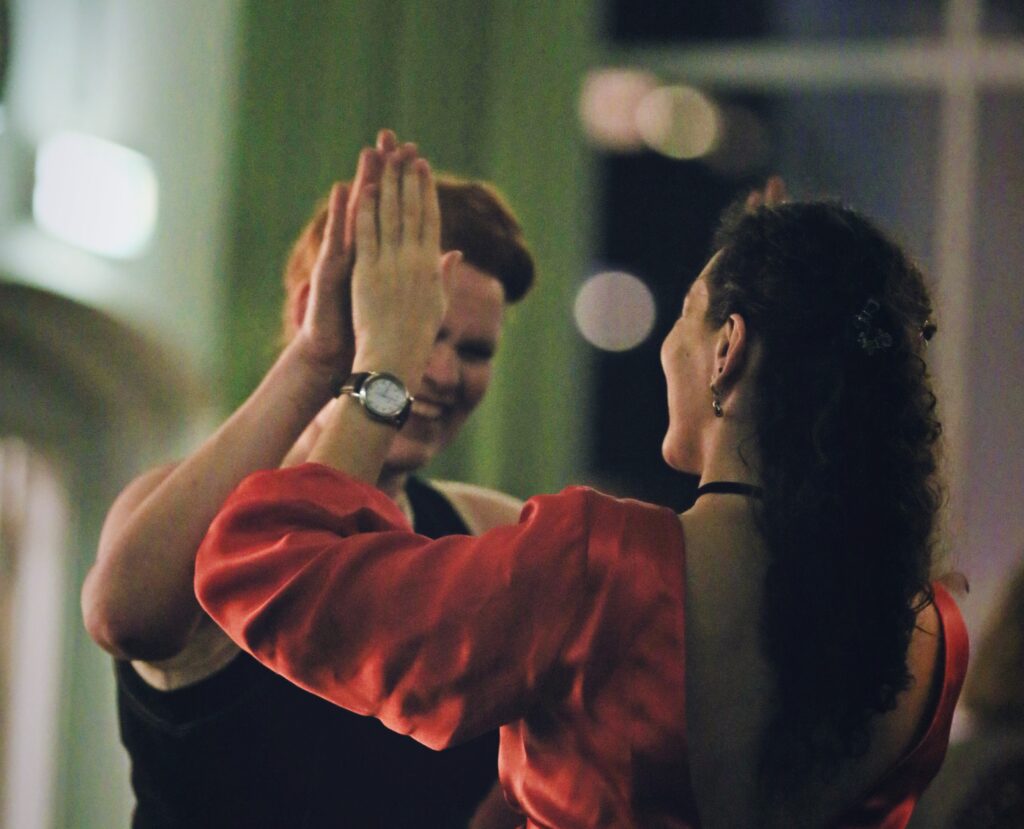
How you can ask for and give feedback in a positive way
Asking for feedback is a positive thing, as it not only shows others that you are willing to learn, but it also puts you in the mindset to learn. Here are a couple of ways to ask for or give feedback that we encourage you to try:
Share with your partner the wish to receive feedback
Calling a teacher over out of nowhere to give feedback on your dancing, might feel intimidating for your dance partner. Maybe he/she/they isn’t ready for feedback yet, and would like to try the move a couple of more times before asking for help. Therefore, before you call on a teacher, share your question with your partner and together agree on asking for feedback. This way you make your wish to improve a shared wish.
Asking an open question without blame
By asking, “what are we doing wrong?” or even, “why isn’t the move working?”, we are able to indicate that something isn’t working without assigning blame to an individual. This sounds so much better than: “What is my partner doing wrong”.
Asking for feedback on your part
Another option is to ask a teacher what you can do to improve to move. This way you take responsibility for your part in the dance.
Describe what you are doing or feeling
This tip is great when you want to give and receive feedback from either your teacher or your dance partner. Instead of asking for direct feedback, you could also describe what you do or feel when a move is executed. For example: “When we do a come around, I feel I lose my connection with you”. You could then ask if your partner feels the same, and from there on analyze if this is working beneficially or what each of you can do to change this.
Be positive when things go better
Also very important after having a moment of feedback and potential struggle on the dance floor, is telling your partner when things go well. You could say: “For me, this move now feels much better than before.”. Or perhaps: “This connection on my back really helps me with moving in a straight line”. Showing that you appreciate the efforts your partner took to improve is always a good thing.
Don’t give too much feedback
The last piece of advice we would like to give you here is: know when to stop. A person can only take in so much and there comes a point when there are simply too many things to change in one class, which can lead to not changing anything at all. So try and stick to the one or two most important things that need improving.
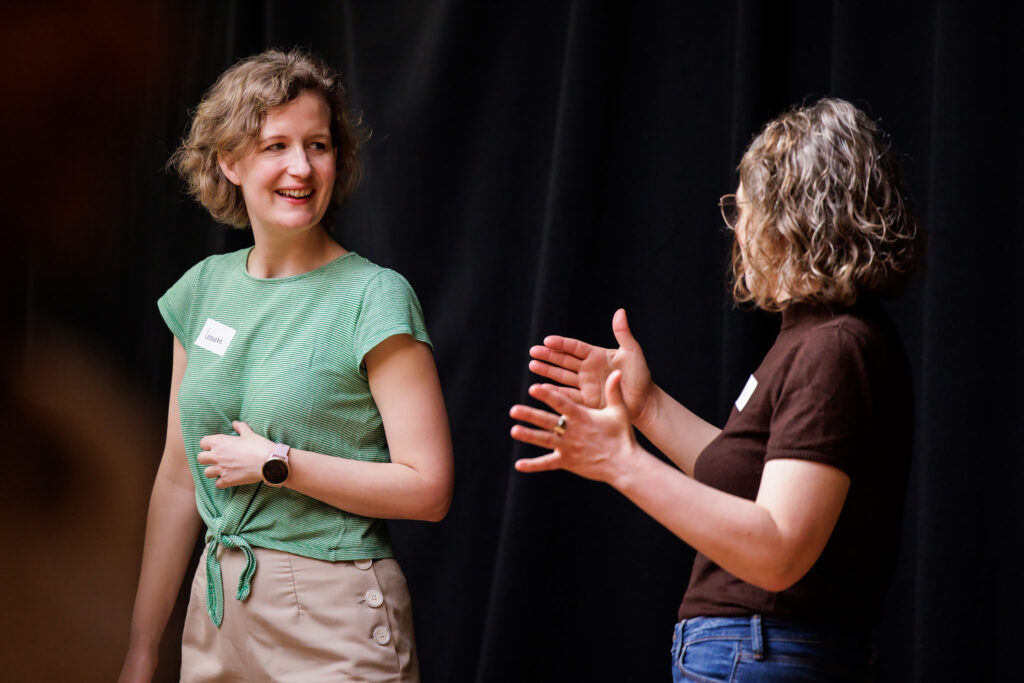
When you really think your partner is messing up…
“But what if it really is my partner who is messing it up?” I hear you ask. Well, even if it is clear that your partner is struggling, if you are the one who calls the instructor over, there shouldn’t be any finger pointing. Remember: you asked for feedback, not your partner. Calling the instructor over in order to ask what your partner is doing wrong shows that you care more about your dance experience than about the shared dance experience.
In conclusion: take your responsibility in how you ask for and give feedback
In summary, when we assign the responsibility for the failure to execute a move to our partner, we hinder their development, we hinder our own development, and potentially, we hurt our scene, which, in turn, hinders our own development. When we ask for help from our perspective (I), or from the shared perspective (we), we open ourselves up to learn something new, while simultaneously supporting our partner. This builds a more positive space that encourages learning. Remember: partner dancing is a social activity in which our actions affect those we dance with, whether in lessons or at events. So, by approaching the dance with the right mindset we can build a supportive, open and happy scene… together :).

